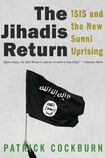
A few months ago few in the West had heard of Isis, the Sunni militants known at different times as Islamic State in Iraq and Syria and as Islamic State in Iraq and the Levant – and now, simply, as Islamic State. That changed on June 10th this year, when, after three days of fighting, Isis captured Iraq's northern capital, Mosul, the second-largest city after Baghdad.
It was a remarkable victory that saw a few thousand Isis fighters defeat the US-armed and -trained Iraqi armed forces, an army with 350,000 soldiers on which €31.5 billion had been spent in the past three years.
Earlier in the year Isis had taken Fallujah, which had been the scene of some of the hardest fighting and heaviest American casualties during the US occupation of Iraq, and by the time Mosul fell the jihadis controlled up to a quarter of Iraq’s territory, as well as swathes of eastern and northern Syria. Isis declared that it had established a new state straddling the border between Iraq and Syria, in which members of non-Muslim religious minorities were given the choice of converting to Islam; accepting an inferior status under the law and paying a special tax; leaving; or being killed. Most have fled.
The Irish journalist Patrick Cockburn, one of the most authoritative and insightful reporters working in the Middle East, has written a timely, immensely valuable account of the rise of Isis and the catalogue of western policy mistakes that helped to create the new jihadi threat. He concludes that Isis is a more formidable force than al-Qaeda was under Osama bin Laden and that it has exploited contradictions in the policies of the US and its allies in the region to establish its position in Iraq and Syria.
More violent and sectarian
Led since 2010 by Abu Bakr al-Baghdadi, now the self-styled caliph of the new Islamic State, Isis emerged from al-Qaeda in Iraq but has shown itself to be more violent and sectarian than al-Qaeda ever was.
It has described its military strategy as "moving like a serpent between the rocks" – using its forces as shock troops to take out easy targets but not getting bogged down in prolonged battles. It has attracted hundreds of foreign fighters, including battle-hardened veterans of wars in Chechnya and Yugoslavia, as well as disaffected young Muslims from western Europe and volunteers from across the Middle East.
In Iraq, Isis has drawn support from members of the Sunni minority who were marginalised under the sectarian, authoritarian rule of Nouri al-Maliki, the Shia prime minister who recently stepped down under pressure from his former sponsors in Washington and Tehran. The Americans fuelled Sunni alienation from the Iraqi state after the defeat of Saddam Hussein when they disbanded Saddam's army and sacked members of his Ba'ath Party from public-service positions.
Cockburn believes, however, that it was the armed campaign by Sunni militants in Syria against the government of Bashar al-Assad that inspired the latest resurgence of Sunni militancy in Iraq. The civil war in Syria began as a popular uprising led initially by secular democrats, but the armed resistance to Assad soon became dominated by jihadi groups. The western powers continue to put their faith in “moderate” opposition forces in Syria, but, as Cockburn points out, moderates have become peripheral in a conflict between a brutal dictatorship on the one hand and savage, sectarian murderers on the other.
Warning signs in Syria
“For two years Iraqi politicians had been warning anybody who would listen to them that if the civil war in Syria continued it would destabilise the fragile status quo in Iraq,” Cockburn writes. “When Mosul fell everybody blamed Maliki, who certainly had a lot to answer for, but the real cause of the debacle in Iraq was the war across Iraq’s border. The revolt of the Syrian Sunni had caused a similar explosion in Iraq.”
If western governments have been blind to the threat represented by groups like Isis, many journalists have also been pleased to fall in with the orthodox narrative about the conflict in Syria.
Cockburn notes that much western reporting of the Arab Spring was informed by a naive belief that technological innovations such as social media had fundamentally changed political realities. “Antagonisms that predated the Arab Spring were suddenly said to be obsolete; a brave new world was being created at hectic speed,” he writes.
Too often foreign reporters joined the opposition in demonising regimes like those of Assad, in Syria, and Muammar Gadafy, in Libya, to the point where they could not imagine that what followed them could be worse. Cockburn recalls mentioning some of the failings of the Libyan militiamen to a western journalist: "Just remember who the good guys are," she replied reprovingly.
The military advance of Isis in Iraq appears to have united its opponents so that a joint effort by Iraqi and Kurdish forces, supported by US air strikes and special operations, may succeed in pushing back the militants. Cockburn is gloomy about the longer-term prospects in Iraq and Syria, particularly if the United States and the Gulf Arab states continue to seek the overthrow of Assad in Syria.
He believes we are witnessing the break-up of Iraq, with the Kurds in the north moving towards secession while Baghdad has lost control of the Sunni heartlands of north and central Iraq. He predicts that the break-up of Iraq into separate Shia, Sunni and Kurdish regions will be painful and violent, with several million refugees displaced from parts of the country with mixed populations.
The Middle East, he concludes, is entering a long period of ferment in which the counter-revolution may prove as difficult to consolidate as revolution itself.











